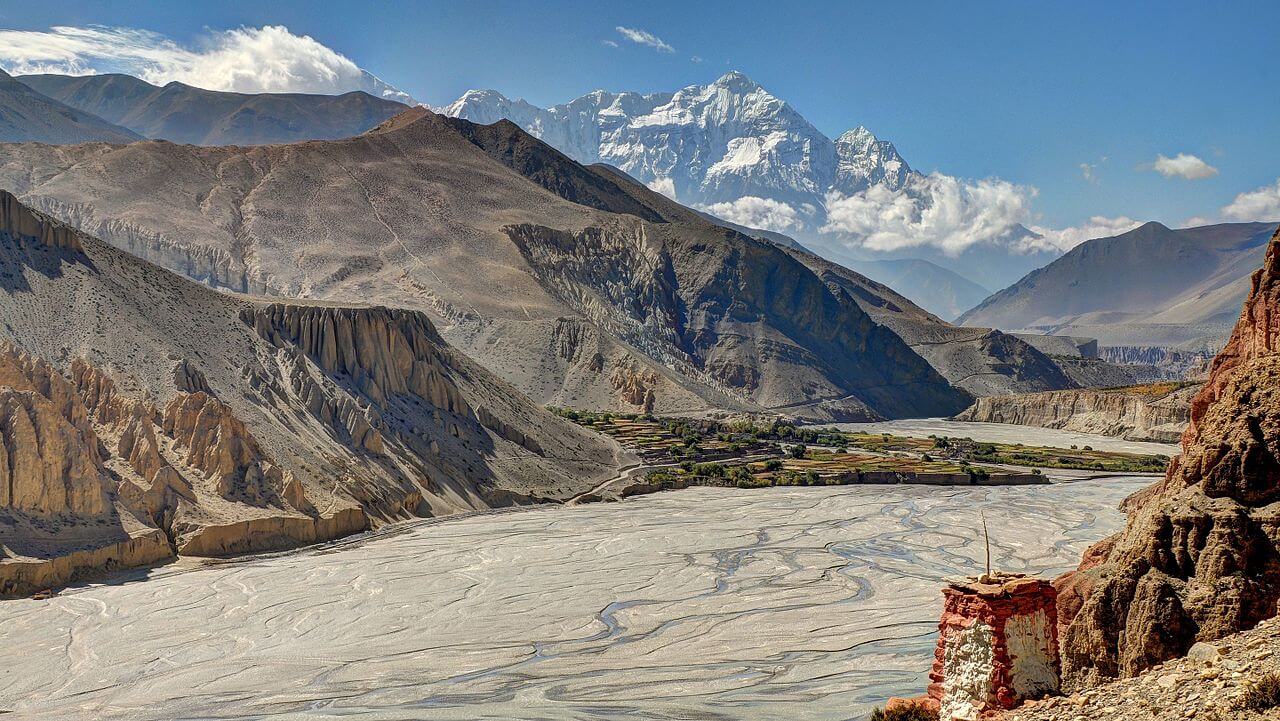Discovering the Mystical Wonders of the Upper Mustang Trek
Discovering the Mystical Wonders of the Upper Mustang Trek
Blog Article

Nestled in the remote corners of the Himalayas, the Upper Mustang trek offers an unparalleled journey into a hidden world steeped in Tibetan culture and ancient traditions. Often referred to as the "Last Forbidden Kingdom," Mustang, or Lo, is a secluded region near the border with Tibet, where time seems to stand still. The trek through this enigmatic land provides an opportunity to explore a unique blend of rugged landscapes, rich cultural heritage, and breathtaking mountain vistas.
The Journey Begins: Kagbeni and Beyond
The trek into Upper Mustang begins in Kagbeni, a picturesque village that serves as the gateway to the region. Kagbeni is strategically located at the confluence of the Kali Gandaki and Jhong rivers and is surrounded by a dramatic landscape of arid terrain and towering peaks. This village is not only a starting point but also a place where trekkers can acclimate and soak in the initial views of the stunning Himalayas.
As you venture further from Kagbeni, the landscape transforms into a stark, yet mesmerizing, panorama of dry, rocky terrain under the immense shadows of the Dhaulagiri mountains. This rugged environment is characteristic of Upper Mustang, where the terrain is both challenging and captivating. The contrast between the barren landscape and the towering snow-capped peaks creates a dramatic backdrop that enhances the trekking experience.
A Journey Through Ancient Mysteries
The Upper Mustang trek is not just about physical challenges; it is also a journey through a land rich in history and spirituality. The trek provides access to ancient caves, rock paintings, and monasteries that offer a glimpse into the region's storied past. These historical sites are a testament to Mustang's deep connection with Tibetan Buddhism and its role as a spiritual and cultural crossroads.
One of the highlights of the trek is the exploration of caves that have been used for meditation and as dwellings by monks for centuries. These caves, carved into the cliffs, are not only a marvel of ancient engineering but also a window into the ascetic practices of Tibetan Buddhism. The rock paintings found in these caves offer insights into the artistic expressions of the past and the religious themes click here that have shaped the region.
Monasteries along the trek serve as important cultural and spiritual hubs. These monasteries are adorned with intricate murals, ancient scriptures, and ceremonial artifacts that reflect the rich Buddhist traditions of Mustang. Visiting these monasteries provides a deeper understanding of the local culture and the role of Buddhism in shaping the lives of the people in Upper Mustang.
Lo-Manthang: The Heart of Mustang
The trek culminates in Lo-Manthang, the historical capital of Mustang. This ancient walled city is a treasure trove of cultural and historical significance. Lo-Manthang is renowned for its well-preserved architecture, including traditional Upper Mustang Trek Tibetan-style homes, ancient monasteries, and the impressive King's palace.
The King's palace, a majestic structure overlooking the city, offers a glimpse into the regal history of Mustang. The palace is a symbol of the region's former sovereignty and provides a fascinating contrast to the surrounding landscape. Exploring the palace allows trekkers to delve into the history of the Mustang kingdom and its rulers.
Another significant site in Lo-Manthang is Namgyal Gompa, an important monastery that serves as a center for Buddhist learning and practice. The gompa is home to a collection of sacred texts, ancient relics, and vibrant murals that depict important events in Buddhist history. A visit to Namgyal Gompa offers an opportunity to witness traditional religious ceremonies and gain a deeper appreciation for the region's spiritual heritage.
Cultural Insights and Local Life
The Upper Mustang trek offers more than just stunning landscapes and historical sites; it also provides a chance to immerse yourself in the local culture. The trek passes through several villages where you can interact with the friendly inhabitants and learn about their traditional way of life. The people of Mustang are known for their resilience and hospitality, and engaging with them provides valuable insights into their daily routines and cultural practices.
A visit to Tingkhar village, located near Lo-Manthang, is a particularly enriching experience. This village is known for its traditional architecture, vibrant festivals, and local craftsmanship. Exploring Tingkhar allows trekkers to witness the local way of life up close and gain a greater understanding of the cultural traditions that have been preserved for generations.
Additionally, the trek includes a visit to the Amchi museum and school, which offers Upper Mustang Trek insights into ancient Tibetan healing methods. The Amchi tradition, a form of traditional Tibetan medicine, is practiced by local healers known as Amchis. The museum provides a fascinating overview of these ancient healing practices and their modern adaptations, shedding light on the rich medical heritage of the region.
Conclusion
The Upper Mustang trek is a journey into a land of ancient mysteries, breathtaking landscapes, and vibrant cultural traditions. From the arid beauty of the terrain to the rich history of Lo-Manthang and the warmth of the local communities, this trek offers an unforgettable adventure for those seeking to explore one of the last remaining bastions of Tibetan culture. For trekkers who are drawn to remote and culturally rich destinations, the Upper Mustang trek promises an experience that is both profound and awe-inspiring.